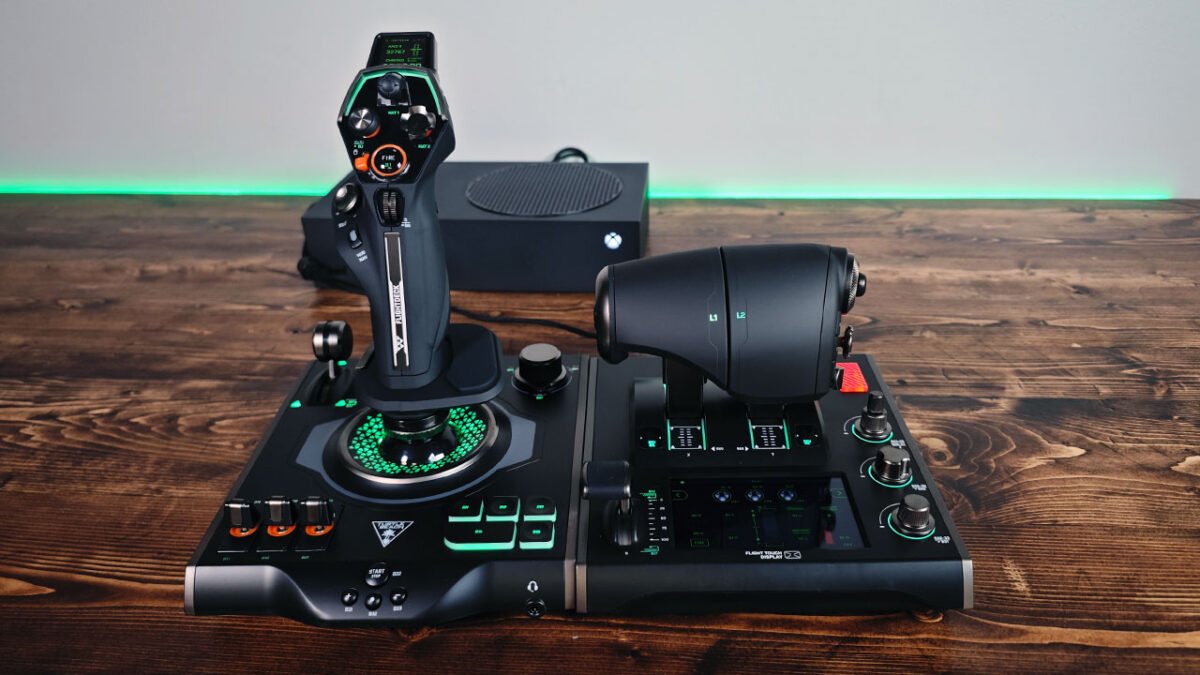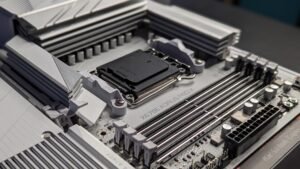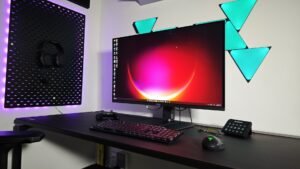Immersion is a big part of the experience when it comes to simulation titles, with games like Microsoft Flight Simulator comfortably sitting at the top. This is thanks to its impressive rendition of the real world (and not so-real ones) and its support for features such as VR and HOTAS (Hands-on Throttle and Stick) peripherals right out of the box.
On the other hand, when I think of manufacturers such as Turtle Beach, I immediately think of quality headphones and audio-related tech aimed at gamers. So, it came as somewhat of a shock to realize that their latest offering, the VelocityOne Flightdeck, is not only impressive in its own right but probably one of the most well-designed and thoughtful controllers out there.
Although, for its $399.99 USD and $549.99 CAD equivalent asking price, maybe it’s no surprise that Turtle Beach has ensured to pack as much as possible into the VelocityOne Flightdeck. In fact, I’d almost say the number of buttons and switches present on the Flightdeck, at least during its launch window, may almost come as a detriment to the experience, but more on that later.

Starting with the unboxing experience. The VelocityOne Flightdeck ships in one hefty box, taking up the vast majority of real estate on my desk. Thankfully, the large box is justified, as despite its somewhat understated packaging, Turtle Beach did not skimp on ensuring ample protection for the VelocityOne Flightdeck, thanks to adequate inserts and dust covers.
“In terms of features and overall build quality, the Turtle Beach Velocity One Flightdeck is mostly solid, particularly with its inclusion of two OLED screens.”
The device itself, or rather the combo unit that makes up the VelocityOne Flightdeck, consists of the flight stick itself and a separate throttle or gear mechanism that is meant to rest next to the stick. Included in the box, Turtle Beach threw in extra screws for those who want to mount the VelocityOne Flightdeck combo to their desk or PC setup.
As far as setting up the physical unit itself, the flightstick part of the VelocityOne first needs to be mounted on the included base, which is easy enough, feeling secure and sturdy after locking everything into place. A USB-C and A combo cable connects the pair to your rig of choice, with Windows automatically picking up on the VelocityOne with no issues.
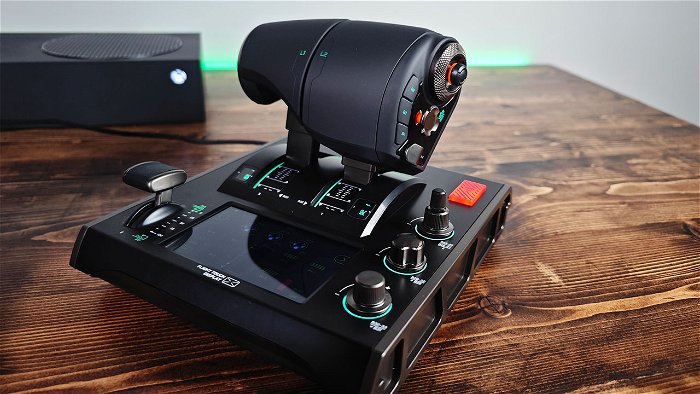
Unfortunately, at least for right now, outside of a relatively easy installation process, using the VelocityOne Flightdeck in Microsoft Flight Simulator can be daunting. As someone not wholly accustomed to using a flightdeck, or even a flightstick-styled controller, the sheer amount of programmable buttons, screens and switches was overwhelming, taking well over a few hours to get everything tuned to a level in which I felt comfortable in playing the game.
“The device itself, or rather the combo unit that makes up the VelocityOne Flightdeck, consists of the flight stick itself and a separate throttle or gear mechanism that is meant to rest next to the stick.”
Thankfully, Turtle Beach is likely to release pre-made profiles that can be used with Microsoft Flight Simulator for those who get the VelocityOne Flightdeck down the line, something that should greatly reduce the overall setup time to get everything off the ground (literally).
Once in-game, playing titles like Microsoft Flight Simulator with the Turtle Beach VelocityOne Flightdeck setup is a transformative experience. The immediate gratification of having tactile controls that control not only your movement but a whole host of in-game instruments adds to the immersion that is hard to replicate with a keyboard and mouse or standard gamepad.
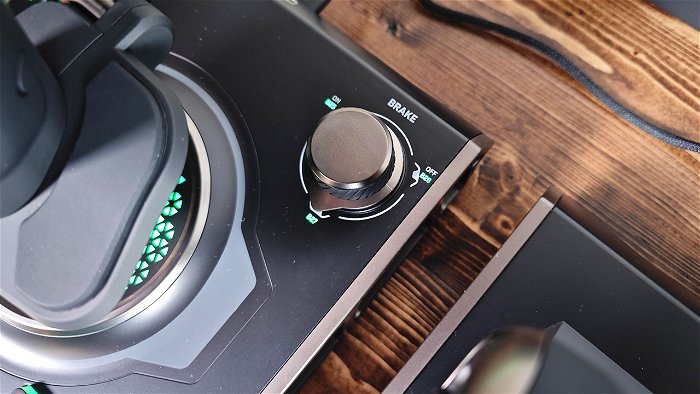
In terms of features and overall build quality, the Turtle Beach Velocity One Flightdeck is mostly solid, particularly with its inclusion of two OLED screens, a large one on the throttle and a smaller one on the top of the flightstick. Starting with the larger screen present on the throttle, users have access to various virtual switches and haptic detent controls, which essentially control the force feedback when operating the throttle. Additionally, using the Turtle Beach software, users can cycle between three themes, including commercial airliner and military, and a third option that feels like it sits somewhere between the two other themes.
“Using the right-hand oriented device feels good in the hand, with easy access to the numerous hat switches and buttons on the controller.”
The app can also label each button on the OLED display while also offering a small selection of Turtle Beach’s built-in profiles for those who just want to jump in without hassle. Finally, the smaller screen present on the flight stick portion of the Velocityone can be mapped to work as an additional indicator for flying metrics such as your acceleration, although, like the screen found on the throttle, the smaller screen too can be customized to feature other relevant metrics via software.
As far as the flight stick goes, using the right-hand oriented device feels good in the hand, with easy access to the numerous hat switches and buttons on the controller. Interestingly, the top portion of the stick features a toggle to allow one of the smaller switches on the controller to be used as a mouse, making it possible never to let go of the stick while navigating through UI elements or when not in the game.
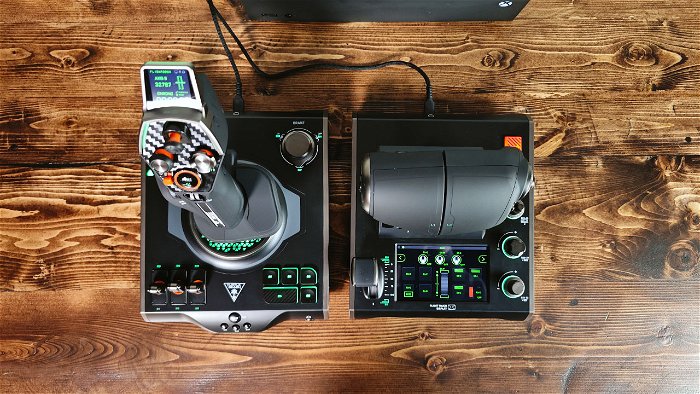
With 139 programmable buttons, I found myself with a wealth of options, many of which, in all honesty, I am still learning to take advantage of, but some of the more notable points of contact include various dials on the throttle, all of which feel great to use and respond accordingly to the cockpit controls in-game, to the landing leaver which make it easy to transition when taking off and landing. Finally, the inclusion of a headphone jack on the lower right of the flightstick was a welcome addition, making it possible to comfortably sit back with the flightdeck without dealing with a short lead for my over-the-ear headphones.
Overall build quality, however, felt a bit all over the place, with the throttle mechanism in particular feeling the best out of the bunch, with a solid feeling give that made granular control a cinch. On the other hand, although overall solid, some of the switches and buttons on the flight stick felt less than stellar, feeling plasticity and likely prone to wear, despite it working perfectly fine when played.
Ultimately, the Turtle Beach VelocityOne Flightdeck is a solid all-in-one package and a must for enthusiasts looking to up their immersion when enjoying games like Microsoft Flight Simulator.
